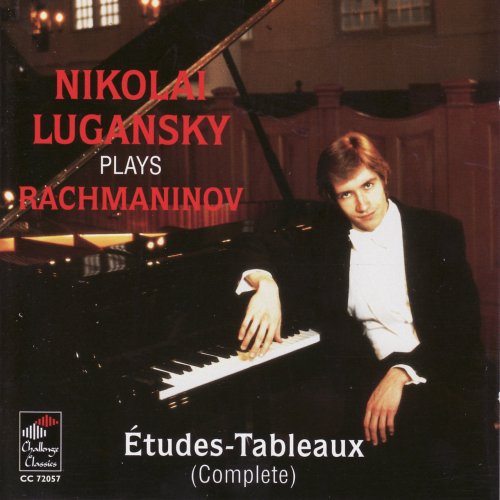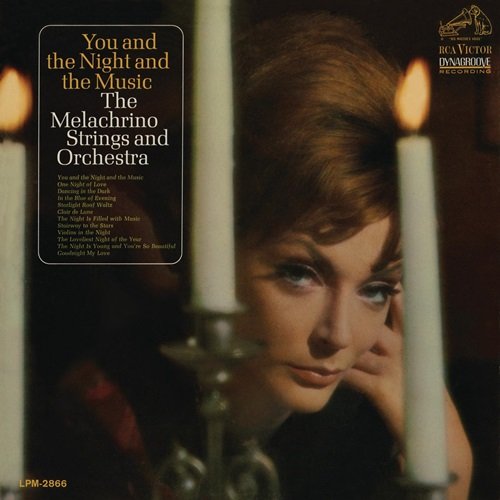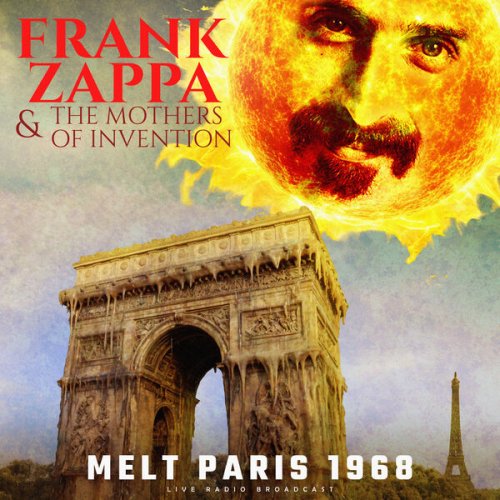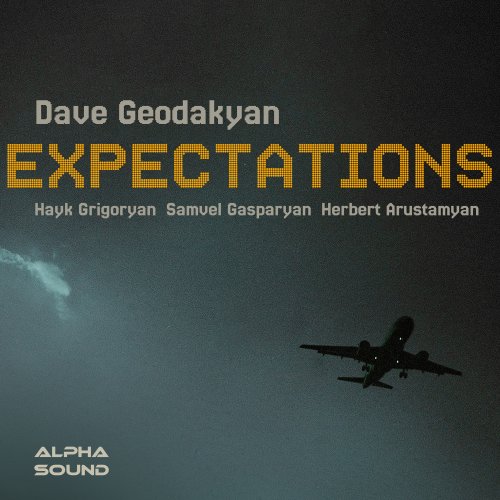Nikolai Lugansky - Rachmaninov: Études-Tableaux, Op. 33 & 39 (2003)

Artist: Nikolai Lugansky
Title: Rachmaninov: Études-Tableaux, Op. 33 & 39
Year Of Release: 2003
Label: Challenge Classics
Genre: Classical
Quality: FLAC (tracks)
Total Time: 01:03:50
Total Size: 241 Mb
WebSite: Album Preview
Tracklist: Title: Rachmaninov: Études-Tableaux, Op. 33 & 39
Year Of Release: 2003
Label: Challenge Classics
Genre: Classical
Quality: FLAC (tracks)
Total Time: 01:03:50
Total Size: 241 Mb
WebSite: Album Preview
1. Études-Tableaux, Opus 33: Allegro Non Troppo - F Minor No. 1
2. Études-Tableaux, Opus 33: Allegro - C Major No. 2
3. Études-Tableaux, Opus 33: Moderato - D Minor No. 5
4. Études-Tableaux, Opus 33: Allegro Con Fuoco - E Flat Major No. 7
5. Études-Tableaux, Opus 33: Grave - C Minor No. 3
6. Études-Tableaux, Opus 33: Non Allegro - E Flat Minor No. 6
7. Études-Tableaux, Opus 33: Moderato - G Minor No. 8
8. Études-Tableaux, Opus 33: Grave - C Sharp Minor No. 9
9. Études-Tableaux, Opus 39: Allegro Agitato - C Minor No.1
10. Études-Tableaux, Opus 39: Lento Assai - A Minor No. 2
11. Études-Tableaux, Opus 39: Allegro Molto - F Sharp Minor No. 3
12. Études-Tableaux, Opus 39: Allegro Assai - B Minor No. 4
13. Études-Tableaux, Opus 39: Appassionato - E Flat Minor No. 5
14. Études-Tableaux, Opus 39: Allegro - A Minor No. 6
15. Études-Tableaux, Opus 39: Lento Lugubre - C Minor No. 7
16. Études-Tableaux, Opus 39: Allegro Moderato - D Minor No. 8
17. Études-Tableaux, Opus 39: Allegro Moderato. Tempo di Marcia D Major - No. 9
Performers:
Nikolai Lugansky, piano
This disc, recorded in 1992 in Moscow, does far more than reproduce just the notes that Rachmaninov wrote. It also delivers a series of performances that dig deep into the Russian soul of Rachmaninov's creations. The recording, although not the finest that I have heard, is still up to the required task.
The two sets of the Etudes-Tableaux were written in 1911 and 1917 and thus pre-date Rachmaninov's departure for the USA. In these emotive compositions he explored the very essence of being a Russian and living in Russia. This is something that Lugansky is able to comprehend and deliver to an unusual degree. As such he continues in the great tradition of a Richter for example, a pianist who only gave us parts of these two sets, but in a way that can make others seem emotionally shallow.
Here are the wide open spaces and vistas, the pent-up emotions, the grandeur, the desolation and much else beside that led Stravinsky to describe Rachmaninov as the six foot scowl. These pieces are far more descriptive of the Russian situation than the Preludes and they make a powerful group of images that dig deep.
Ashkenazy clearly empathised strongly with the content of these pieces in his fine set. Richter dug deeper still but did not give us all the pieces. Lugansky is clearly of a similar mind and his natural tendency to seek out the darker side of composers' works (Chopin's etudes for example) enables a deepening of perspective here that seems totally appropriate.
I would suggest that this set deserves to be considered most strongly by anyone interested in obtaining a 'Russian' view of these wonderfully expressive works.
The two sets of the Etudes-Tableaux were written in 1911 and 1917 and thus pre-date Rachmaninov's departure for the USA. In these emotive compositions he explored the very essence of being a Russian and living in Russia. This is something that Lugansky is able to comprehend and deliver to an unusual degree. As such he continues in the great tradition of a Richter for example, a pianist who only gave us parts of these two sets, but in a way that can make others seem emotionally shallow.
Here are the wide open spaces and vistas, the pent-up emotions, the grandeur, the desolation and much else beside that led Stravinsky to describe Rachmaninov as the six foot scowl. These pieces are far more descriptive of the Russian situation than the Preludes and they make a powerful group of images that dig deep.
Ashkenazy clearly empathised strongly with the content of these pieces in his fine set. Richter dug deeper still but did not give us all the pieces. Lugansky is clearly of a similar mind and his natural tendency to seek out the darker side of composers' works (Chopin's etudes for example) enables a deepening of perspective here that seems totally appropriate.
I would suggest that this set deserves to be considered most strongly by anyone interested in obtaining a 'Russian' view of these wonderfully expressive works.

![Erwan Keravec - Whitewater (2025) [Hi-Res] Erwan Keravec - Whitewater (2025) [Hi-Res]](https://img.israbox.com/img/2025-12/21/2e6xtjojbwml63os6dxwp1bzj.jpg)

![Pharoah Sanders - Love is Here: The Complete Paris 1975 ORTF Recordings (2025) [Hi-Res] Pharoah Sanders - Love is Here: The Complete Paris 1975 ORTF Recordings (2025) [Hi-Res]](https://www.dibpic.com/uploads/posts/2025-12/1766433183_a3712374313_10.jpg)




![Mick Rossi - Songs from the Broken Land (2024) [Hi-Res] Mick Rossi - Songs from the Broken Land (2024) [Hi-Res]](https://www.dibpic.com/uploads/posts/2025-12/1766399499_592x592.jpg)